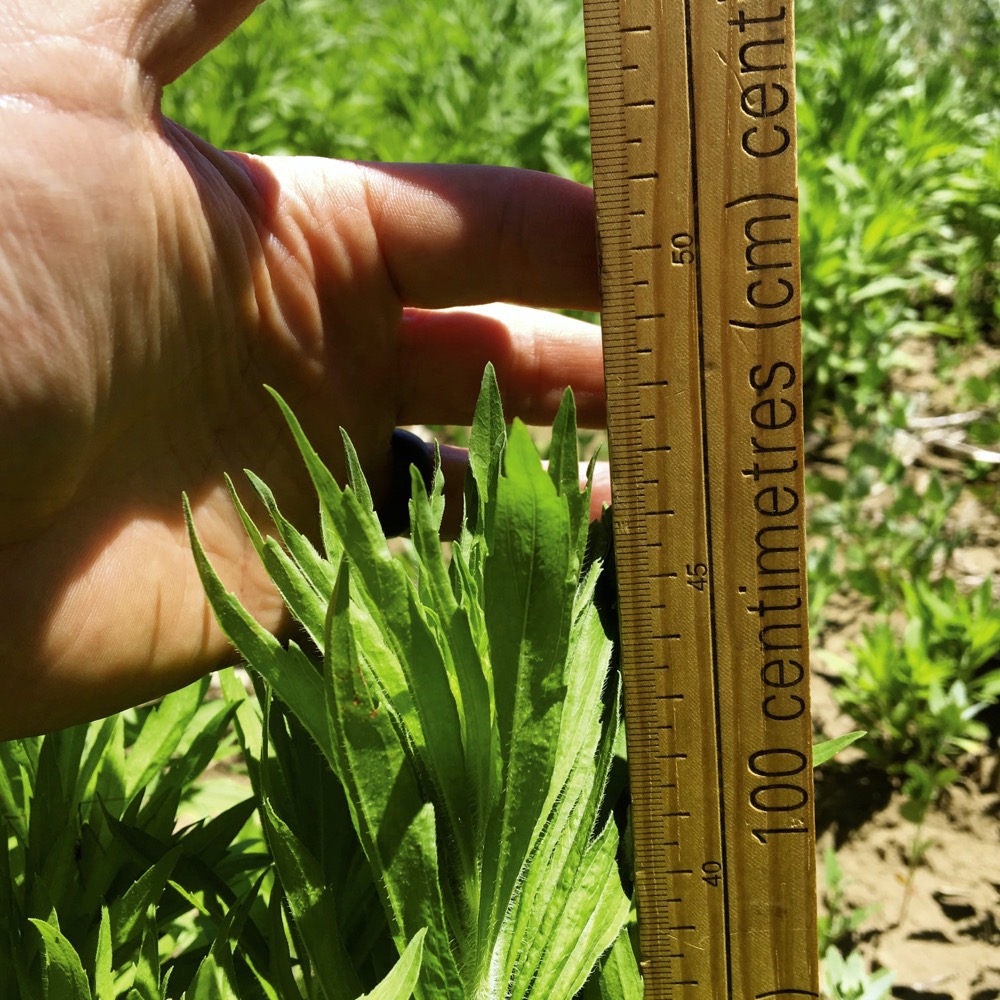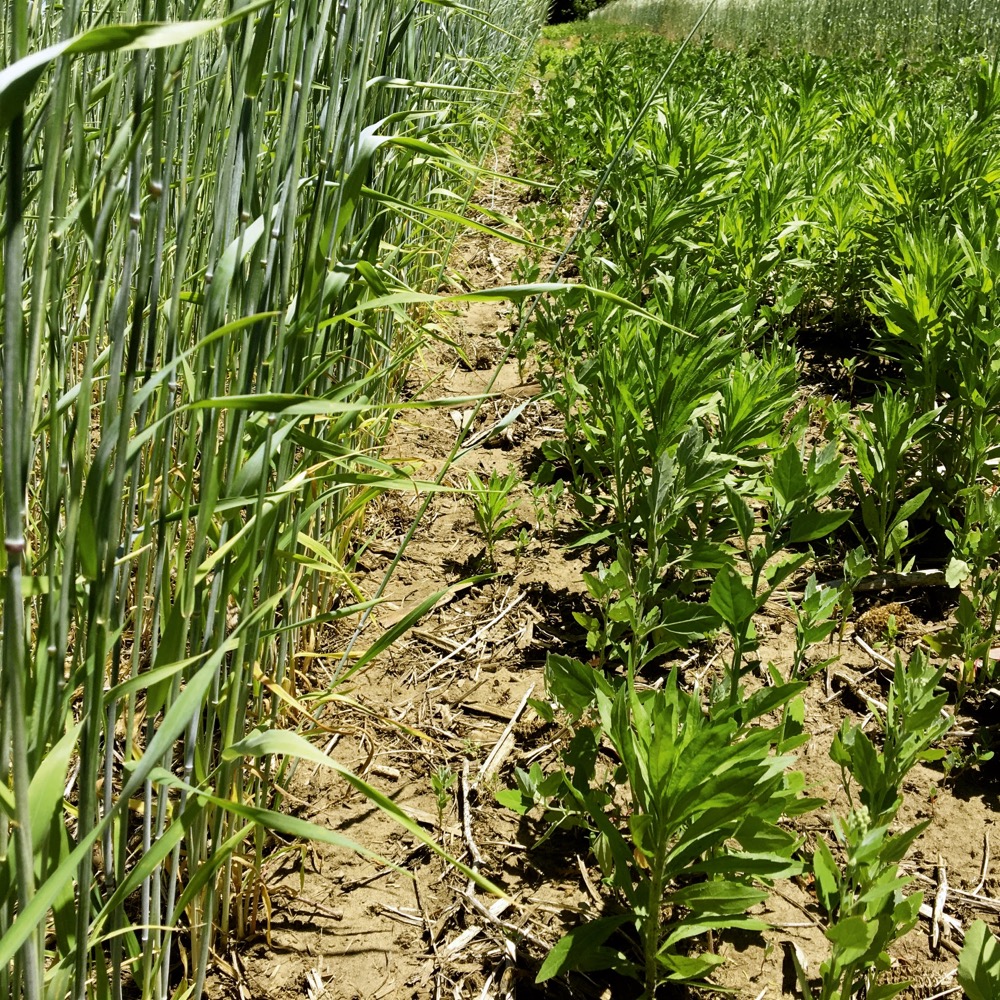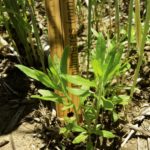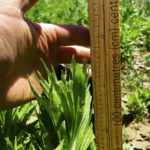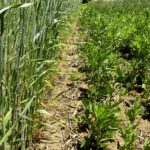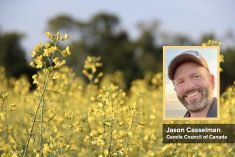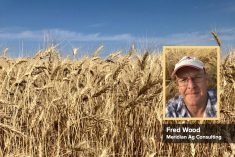
PestPatrol-Fig1-Sept2018
Figure 1. An overhead look at the level of control that cereal rye has provided when it was seeded the previous fall (mid- November) at 60 lbs./ac. (left) compared to no cereal rye planted (right).
Photo: Supplied
PestPatrol-Fig2-Sept2018
Figure 2. Height of glyphosate-resistant Canada fleabane within fall-seeded cereal rye.
Photo: Supplied
PestPatrol-Fig3-Sept2018
Figure 3. Height of glyphosate-resistant Canada fleabane in the absence of fall-seeded cereal rye.
Photo: Supplied
PestPatrol-Fig4-Sept2018
Figure 4. Recruitment of glyphosate-resistant Canada fleabane appeared to stop within 10 to 15 cm (four to six inches) of the outside row of cereal rye, prompting speculation that differences in weed populations may be due to allelopathy.
Photo: Supplied
Q: Can cover crops be an effective tool to manage glyphosate-resistant weeds?
A: My colleague Dr. Clarence Swanton (University of Guelph) used to say that based on research he did in the 1980s, one should not expect to control weeds with cover crops. Their utility was in preventing soil erosion and improving soil health but not in significantly reducing weed populations.
However, Dr. Swanton has had to re-think his long-held position on cover crops and weed control given recent observations from on-farm research trials where fall-seeded cereal rye has reduced glyphosate-resistant Canada fleabane populations.
Read Also

Sensing the soil: Root cell research finds ‘stress hormone’
Research into how root cells react to soil stressors could help plants better adapt to changes in their climate.
University of Guelph graduate student Ted Vanhie, under the supervision of both Swanton and Dr. François Tardif, is looking at an integrated approach to the control of glyphosate-resistant Canada fleabane using tillage, herbicides and fall-seeded cereal rye. The concept is whether frost seeding fall rye ahead of soybeans could significantly reduce populations of this weed. Below are observations Vanhie has made during the spring of 2018.
Fall tillage followed by planting cereal rye resulted in the best control of glyphosate resistant Canada fleabane (Figure 1). Although glyphosate-resistant Canada fleabane was still found in no-till fall-seeded cereal rye, there were fewer and smaller plants compared to areas where no cereal rye was established and no fall tillage operation was performed (Figures 2 and 3).
Cereal rye seeded at 50 to 60 lbs./ac. provides little ground cover and shading. It is speculated that there is allelopathy inhibiting recruitment of glyphosate-resistant Canada fleabane (Figure 4). Further experiments will test this hypothesis.
This project was funded by the Grain Farmers of Ontario.
Have a question you want answered? Hashtag #PestPatrol on Twitter to @cowbrough or email Mike at [email protected].


